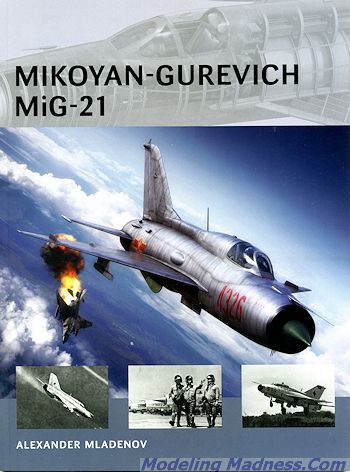 During the late
1950s, the emphasis on fighter aircraft was on interceptors. These were the
planes designed to quickly reach the altitude of enemy bombers and shoot them
down. In the US it developed into the F-101B, F-102 and F-106. To some extent it
also played into the development of the F-4 Phantom II. For the Soviet Union, it
produced the MiG-21.
During the late
1950s, the emphasis on fighter aircraft was on interceptors. These were the
planes designed to quickly reach the altitude of enemy bombers and shoot them
down. In the US it developed into the F-101B, F-102 and F-106. To some extent it
also played into the development of the F-4 Phantom II. For the Soviet Union, it
produced the MiG-21.
Here was a lightweight fighter that sacrificed range and payload to
ensure the best performance that could be pulled out of an airframe at the time.
Several different designs were conceived and two were built; one with highly
swept back wings like the MiG-19 and the other with a delta wing, though
retaining standard tailplanes. As we know it was the latter, slightly modified
that was chosen. Thus began an airframe development that lasted for a decade of
new and improved variants from the MiG-21F-13 of 1961 until the MiG-21bis of
1972. Of course, those are just service entry dates as the MiG-21 was
continuously built in its different variants not only in the Soviet Union but
also in other nations from 1961 until the last Chinese built J-7 rolled off the
production line in 2008. A longevity matched by few other military aircraft.
Like the previous MiG-15 and MiG-17, the MiG-21 was exported to a
variety of nations, all of whom were either directly in the sphere of influence
of the Soviet Union or friendly to the USSR. Probably one of the largest users
of the MiG-21 in combat was the Egyptian Air Force, though like many MiG-21
operators, the aircraft was not used to the best of its abilities and ended up
being on the receiving end of enemy guns and missiles more often than the other
way around.
Interestingly, it was discovered by the USAF's Red Eagle squadron that
used ex-Indonesial AF MiG-21 F-13 for aggressor training, that the MiG-21 was
very much a superb dog-fighter and was quite capable of outfighting the aircraft
of the time if properly flown. However, it was hampered by the need to limit its
maneuverability thanks to the missile system that it used, which was quite
unable to operate properly at high g loads. Not only that, but the missiles
would often lose lock-on when the target pulled high-g maneuvers.
Due to its widespread use, it participated in several wars including
multiple Middle East conflicts as well as Indo-Pakistani wars and the US war in
Vietnam. It also saw combat during the wars of the break-up of Yugoslavia and
during the Soviet war in Afghanistan. Often times it was used as a fighter
bomber, and while its payload was not the greatest, it was effective in this
role. Even today, dozens of nations are using the MiG-21 or one of its Chinese
built derivatives.
This book looks into the background and the development
of the MiG-21 as well as the aircraft that came before it and after it.
All of the different variants are covered as well as an in-depth look at one of
the more produced versions, the MiG-21PF. In addition to the difference between
variants, foreign production is covered as is its use in various conflicts.
Several pages of full color art work and profiles are included as well as the
usual large cutaway on the back two pages. A great read and highly recommended.
July 2014
For more on the complete line of Osprey books,
visit www.ospreypublishing.com. In the US, it is
Osprey Direct at 44-02 23rd St, Suite 219, Long Island City, NY 11101., where you can
get a catalogue of available books.
If you would like your product reviewed fairly and
fairly quickly, please
contact
the editor or see other details in the
Note to
Contributors.
 During the late
1950s, the emphasis on fighter aircraft was on interceptors. These were the
planes designed to quickly reach the altitude of enemy bombers and shoot them
down. In the US it developed into the F-101B, F-102 and F-106. To some extent it
also played into the development of the F-4 Phantom II. For the Soviet Union, it
produced the MiG-21.
During the late
1950s, the emphasis on fighter aircraft was on interceptors. These were the
planes designed to quickly reach the altitude of enemy bombers and shoot them
down. In the US it developed into the F-101B, F-102 and F-106. To some extent it
also played into the development of the F-4 Phantom II. For the Soviet Union, it
produced the MiG-21.